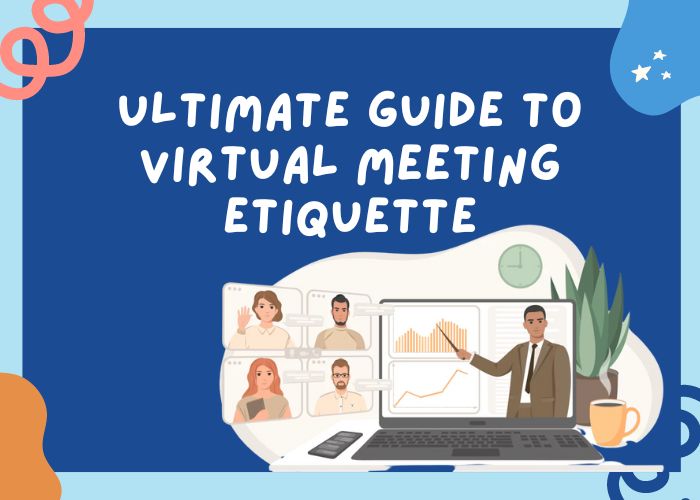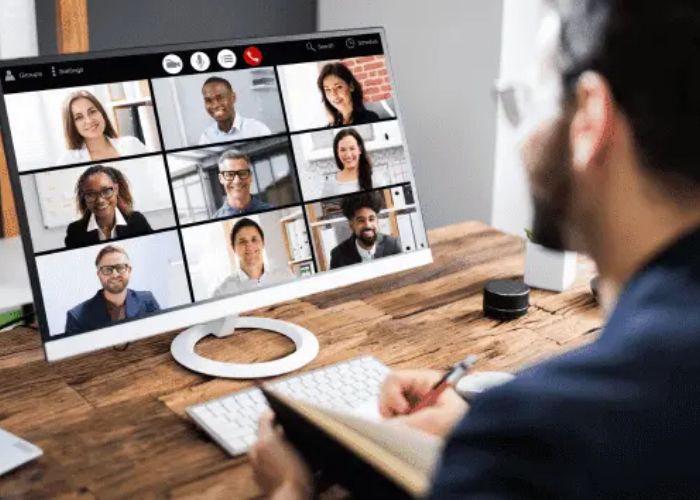Ultimate Guide to Virtual Meeting Etiquette: Tips for Effective Online Collaboration

In today’s digital age, virtual meetings have become a cornerstone of professional communication. Whether you’re a seasoned remote worker or new to the concept, mastering virtual meeting etiquette is essential for productive and professional interactions. Here’s a comprehensive guide to ensure your online meetings are effective and efficient.
Preparation is Key
Test Your Technology: Before the meeting, check your internet connection, microphone, camera, and any software you’ll be using. This helps prevent technical issues that can disrupt the meeting flow.
Set Up Your Space: Choose a quiet, well-lit location. Ensure your background is professional and free from distractions to maintain a focused environment.
Prepare Materials: Have all necessary documents, presentations, and notes ready beforehand. This allows you to share information smoothly and keep the meeting on track.
Professionalism During the Meeting
Punctuality: Join the meeting a few minutes early to settle in and address any last-minute issues. This shows respect for others’ time and keeps the meeting schedule intact.
Dress Appropriately: Wear professional attire as you would in an in-person meeting. It helps set the right tone and reflects your professionalism.
Mute When Not Speaking: To avoid background noise, keep your microphone muted when you are not speaking. This helps maintain clarity and focus for everyone involved.
Effective Communication
Use Clear and Concise Language: Speak clearly and directly to convey your points effectively. Avoid jargon unless everyone in the meeting understands it.
Engage Actively: Participate in the discussion, ask questions, and provide feedback. Active engagement shows you’re attentive and invested in the meeting.
Be Mindful of Body Language: Non-verbal cues are crucial even in virtual settings. Maintain eye contact by looking at the camera, and use gestures to emphasize points when appropriate.
Follow-Up
Summarize Key Points: At the end of the meeting, summarize the main takeaways and action items. This ensures everyone is on the same page and knows what to do next.
Send Meeting Minutes: After the meeting, distribute minutes or a summary of the discussion and decisions made. This helps in maintaining a record and tracking progress.
Provide Feedback: If appropriate, provide constructive feedback on the meeting’s process and suggest improvements for future meetings. This fosters a culture of continuous improvement.
Additional Tips
Use Meeting Tools: Leverage features like screen sharing, virtual whiteboards, and breakout rooms to enhance collaboration and engagement.
Respect Time Zones: Schedule meetings considering the time zones of all participants to ensure maximum attendance and convenience.
Practice Patience and Flexibility: Technical glitches and interruptions can happen. Stay patient and adaptable to maintain a positive and productive meeting environment.
Encourage Participation: To ensure everyone’s voice is heard, encourage quieter participants to share their thoughts. This can lead to a more inclusive and balanced discussion.
Limit Multitasking: Focus on the meeting by avoiding other tasks. Multitasking can lead to missed information and reduced meeting effectiveness.
Use Visual Aids: Incorporate slides, charts, or other visual aids to make your points clearer and keep the audience engaged.
Set a Clear Agenda: Outline the meeting agenda beforehand and stick to it. This helps keep the meeting focused and ensures that all necessary topics are covered.
Assign Roles: Designate roles such as a timekeeper, note-taker, or moderator to help manage the meeting effectively and ensure that all tasks are completed.
By following these tips, you can ensure your virtual meetings are professional, efficient, and effective, fostering better communication and collaboration among your team.


